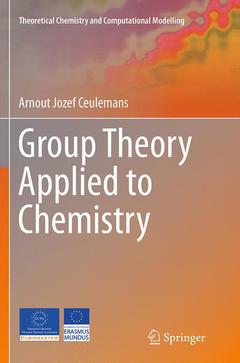Description
Group Theory Applied to Chemistry, 2013
Theoretical Chemistry and Computational Modelling Series
Author: Ceulemans Arnout Jozef
Language: English
Subject for Group Theory Applied to Chemistry:
69.00 €
In Print (Delivery period: 15 days).
Add to cartSupport: Print on demand
Description
/li>Contents
/li>Comment
/li>
Chemists are used to the operational definition of symmetry, which crystallographers introduced long before the advent of quantum mechanics. The ball-and-stick models of molecules naturally exhibit the symmetrical properties of macroscopic objects. However, the practitioner of quantum chemistry and molecular modeling is not concerned with balls and sticks, but with subatomic particles: nuclei and electrons.
This textbook introduces the subtle metaphors which relate our macroscopic understanding of symmetry to the molecular world. It gradually explains how bodily rotations and reflections, which leave all inter-particle distances unaltered, affect the study of molecular phenomena that depend only on these internal distances. It helps readers to acquire the skills to make use of the mathematical tools of group theory for whatever chemical problems they are confronted with in the course of their own research.

